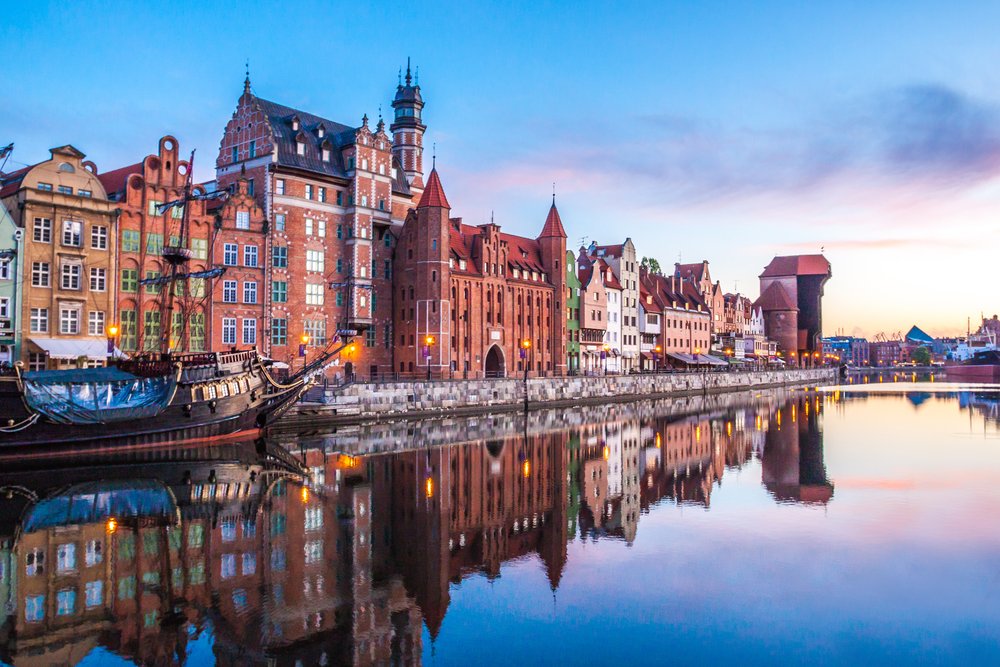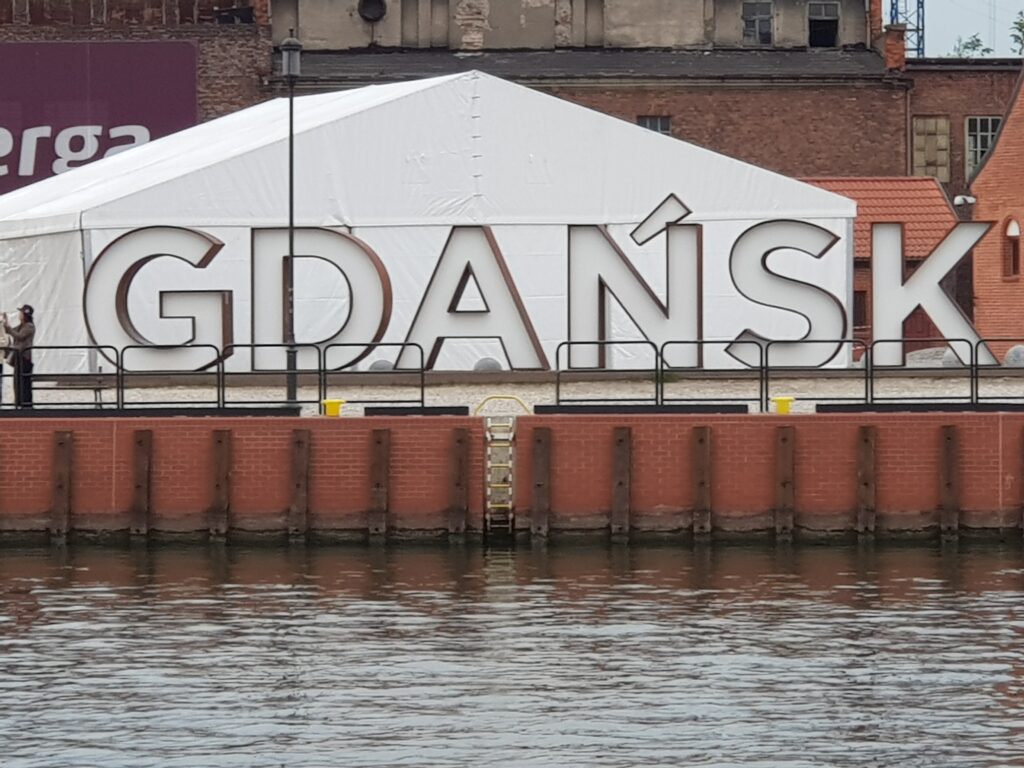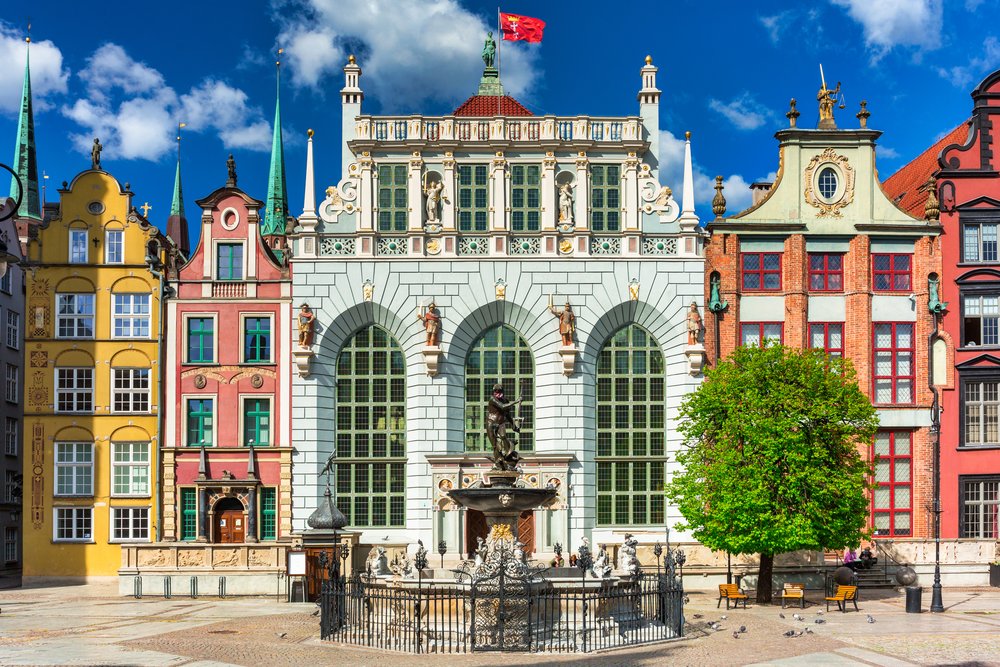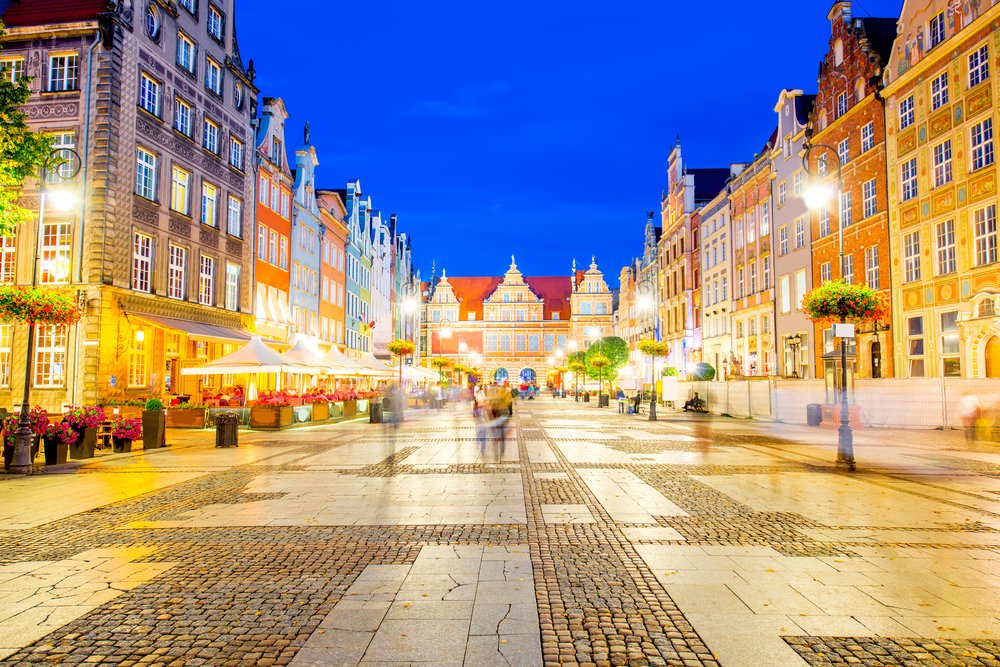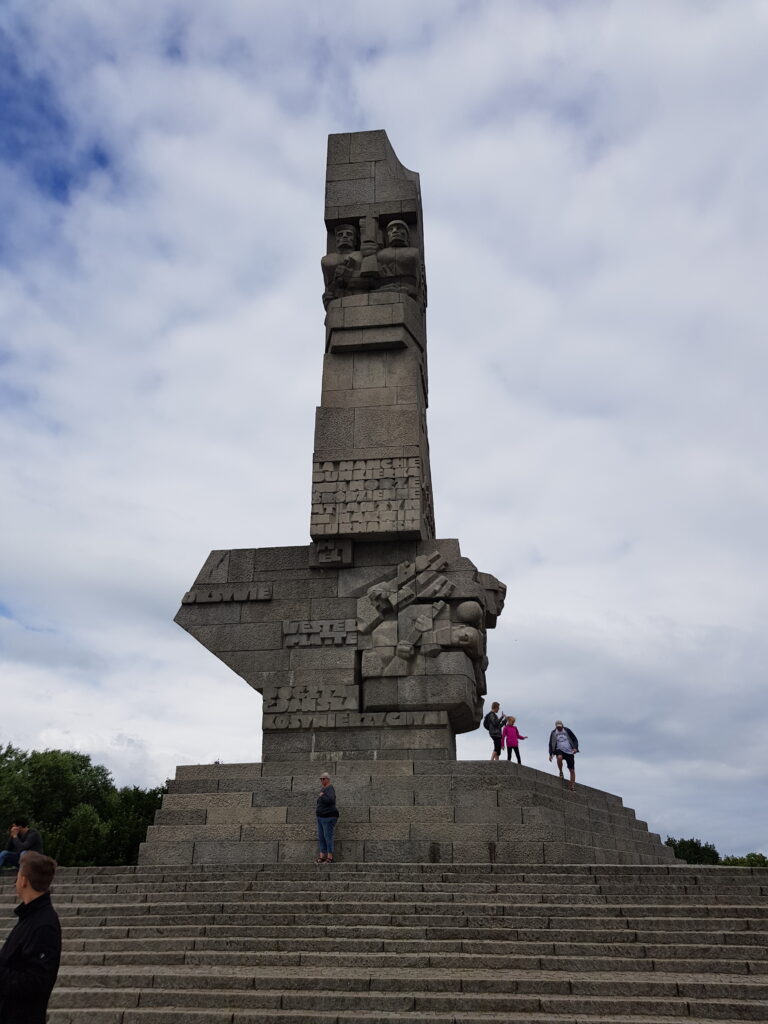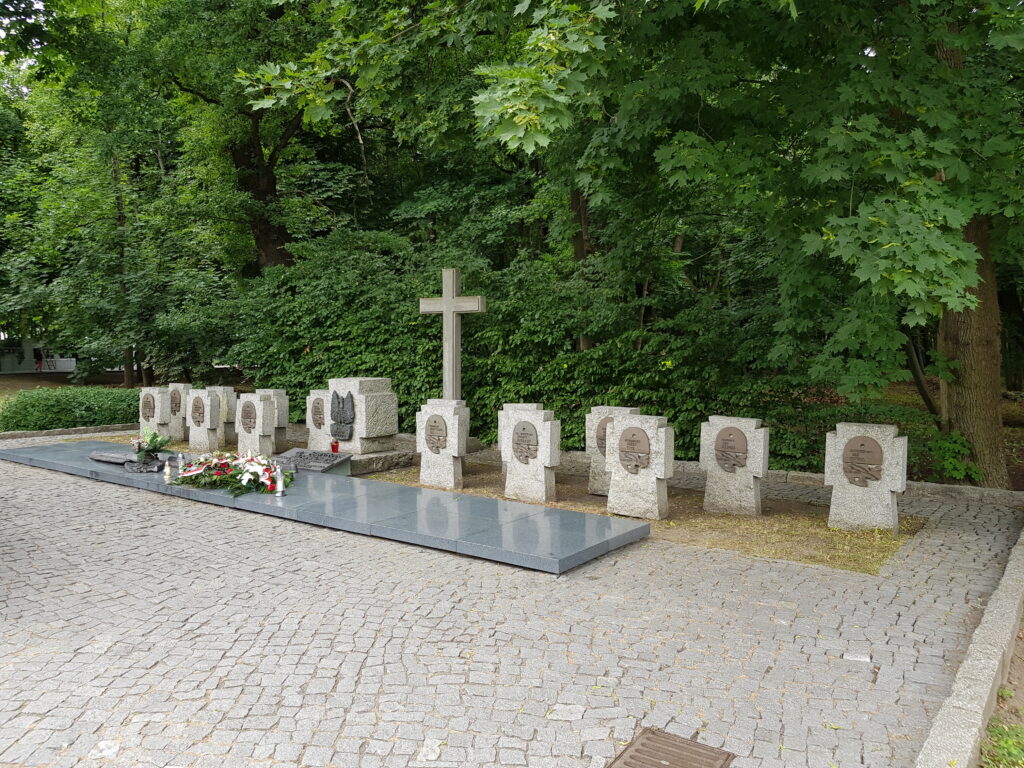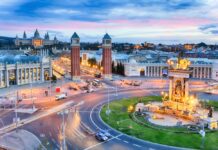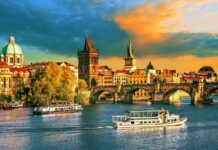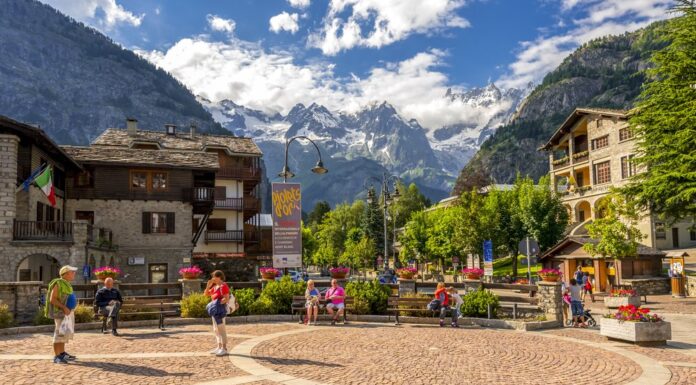A sprawling city that has evolved since medieval times, Gdansk is a beautiful metropolis that mixes arts, culture, and history. It’s a popular tourist hub for its food, wine, and eclectic night scene. But other than its electrifying atmosphere, the top attractions in Gdansk tell century-old stories in a rhythmic melody.
From talented street musicians that play jazzy tunes to its quirky bars, Gdansk promises its travelers a soulful retreat. And even if you don’t hear any notes playing around its corners, you can feel the laid-back, artistic vibe in the city. All it takes is a 30-minute tour to a must-see site in Gdansk and you’d understand why it quickly became one of our favorite Polish cities.
What to Expect When Visiting the Top Attractions in Gdansk
Currency: Polish Zloty/PLN (zł )
Language: Like other cities in Poland, Polish is the first language used in Gdansk. But since it is a go-to place for travelers looking for a weekend city-break, English has become more prominent in the city.
Transportation: Gdansk has no subway station, but you can efficiently get around the city via SKM trains. Taxis, trolleybuses, trams, and local buses are also common modes of transport here. The SKM commuter train gets you past Gdansk and two other Polish cities, Gdynia and Sopot. Our advice: get a Metropolitan ticket, which gives you a 24-hour travel pass for only around 10 zł. Once you purchase a ticket at Gdansk’s post office or ticket booth, you can easily top-up your travel pass for a hassle-free tour to some of the top attractions in Gdansk.
Time Zone: Central European Standard Time (GMT+1)
Socket: Type C and Type E
Weather: From December to February, Gdansk experiences a chilly and dry winter season typical in an oceanic climate. The temperature in January, which is the coldest month of the year, can drop to 1°C. June to August, on the other hand, marks the summer season, when temperatures usually rise to around 23°C. From March to May, Gdansk welcomes spring with temperatures ranging between 5°C to 18°C. Come fall, which starts from September to October, the weather begins to feel a bit chilly in preparation for the winter season.
Best Travel Times: It’s always best to travel around the top attractions in Gdansk once summer hits the city. But since it is considered a peak season, you may want to avoid huge crowds by planning your trip before May or after September, when the climate is still idyllic.
Creating a Travel Budget When in Gdansk
The cost of visiting Gdansk highly depends on your travel priorities. But if there’s any good news you can bring home, it’s that Gdansk is one of the cheapest Polish cities to visit. Despite its popularity, backpacking on a budget here is fairly doable. So if you’ve been eyeing a must-see site in Gdansk, here are some of the things you need to consider:
- Gdansk Hotels and Hostels: It’s easy to spot Gdansk hotels and hostels once you’re in the city center. On average, a room for two in mid-range Gdansk hotels is at around 329 zł ($89) per night. A room for one person, by contrast, usually starts at 165 zł ($45). If you are traveling as a group, you can also look for an Airbnb, which can cost roughly 134 zł ($36) per night.
- Food: One of the top attractions in Gdansk is its delectable culinary scene. If you want to engage in a gastronomic adventure, prepare to spend around 80 zł ($22) per meal (or more). But if you’re on a tight budget, you can skip the fancy meals and cook your food (especially if you’re staying in an Airbnb). If you’re staying in Gdansk hotels, on the other hand, take advantage of their free breakfast so you can save up on food.
- Transport: Your transport cost depends on your travel preferences. If you’re staying in Gdansk for one day or more, purchase a Metropolitan ticket, which can help you significantly cut travel expenses. The cost per ticket is 10 zł ($2.69).
When visiting Gdansk, it’s safe to set aside 271 zł ($73) per person per day. But if you’re planning anything fancy, adjust your daily allowance and book your hotels ahead of time so you can realistically create a travel budget.
A Tour to The Top Attractions in Gdansk
One of Europe’s most beautiful port cities lies in its northern territory. Gdansk, a capital metropolis on the Baltic Coast, boasts stories that date back to the medieval period. Once a victim of WWII’s wrath, Gdansk rose from the ashes and built an empire that flaunts a unique character. Be it a trip down to memory lane or a laid-back Saturday night with friends, Gdansk is one city you should add to your travel list, and here’s why.
Długi Targ
Don’t be surprised if you hear musical symphonies when you’re exploring the corners of Długi Targ. Tourists have been frequenting the area not just for the city’s must-visit sites, but for bands and solo musicians that bring love and music in the air.
A long market that acts as Gdansk’s central hub, Długi Targ is the perfect jump-off point for a two-day get-away. You can readily see some of the top attractions in Gdansk once you step foot on the square. The best place to people-watch and to just enjoy street music, Długi Targ gets you acquainted with Gdansk’s cultural and artistic geniuses. Once you’re in the area, below are some of the sites you’ll come across:
The Golden Gate
The avenue for IG-worthy photos often comes in posh packagings, and the Golden Gate is no exception. Built back in the early 1600s, this Renaissance-style structure follows the design of Abraham van den Blocke. Its sophisticated carvings symbolize an allegory of the virtues of Poland’s ideal citizens: Harmony, Justice, Piety, and Prudence.
Even better news: the Golden Gate is located at the western end of Długi Targ, making it the best starting point of your day tour. Lying near the Golden Gate are other top attractions in Gdansk including the Gothic-style Manor of St. George’s Guild.
The Golden House
Not to confuse with the Golden Gate, the Golden House is a completely different must-see site in Gdansk that flaunts historical figures. Dubbed as the most gorgeous building in the city, the Golden House welcomes visitors with its richly-detailed facade. It was built in 1609 by the former Polish mayor-slash-affluent merchant, Jan Speyman, and Judyta, his wife.
Apart from its snap-worthy façade, it also houses carvings that represent past Polish kings. Today, the Golden House is recognized as one of the most spectacular tenements in the Royal Road.
Artus Court
The Artus Court was formerly a meeting place for dignitaries and merchants in the 16th and 17th centuries. Inside this prominent mansion is a round table used to host noble guests. Dedicated to the legendary King Arthur, the Artus Court met Gothic-style redevelopments following a fire incident a century after its construction.
The elaborate paintings and sculptures, along with allegorical figures and adornments, now add to its unique character. From a breathtaking facade guarded by lion sculptures to 36-feet, Renaissance-style tiled stoves, everything about the Artus Court makes it a must-see site in Gdansk.
Neptune’s Fountain
Also called Fontanna Neptuna, Neptune’s Fountain sits right at the heart of Długi Targ, just across the Artus Court. It is a mannerist-rococo showpiece that was built back in the early 17th century. A bronze sculpture that represents Neptune, the Roman sea god, this world-renowned sculpture is one of Gdansk’s distinct landmarks.
Green Gate
Call it ironic, but Długi Targ’s tour starts and ends with iconic gates. The Green Gate, which is located at the street’s eastern end, concludes the Royal Route. This 4-arched gatehouse was intended to house Polish monarchs in the early centuries, but history has it that no Polish king ever lived here. From the Green Gate, you can head out to the Green Bridge, which is suspended over Motlawa River.
Main Town Hall
From Neptune’s Fountain, you can easily hover over to the Main Town Hall, which lies at the intersection of Długi Targ and Ulica Długa. Its main landmark: a green Gothic clock that greatly matches its Gothic-Renaissance architecture. A well-known Ratusz in the city, the Main Town Hall is visible in Dluga’s skyline and is known as the second tallest building within the Main City, standing next to St. Mary’s Basilica.
The Main Town Hall was originally built in the 14th century. It was meticulously renovated after its destruction in WWII. Today, it plays an important role in Gdansk as it now shelters the city’s History Museum. What you can expect inside the hall are vibrant frescoes, painted ceilings, and historical carvings. If you’re willing to pay extra, you can climb the top of the Main Town Hall’s tower, which gives you panoramic views of Długi Targ and Motlawa River. If you’re lucky enough and the sky clears up, you can also see the Baltic sea from up here.
Ulica Długa
It’s hard not to swing by Ulica Długa when you’re day-tripping in Długi Targ. After all, it’s just a few steps away from the square, and it is one of those top attractions in Gdansk where you can enjoy arts, food, and, our favorite, bar hopping. Also called Long Lane, Ulica Długa is the city’s main tourist hub for its wide selection of restaurants and bars.
Along with its energetic vibe are century-old structures that have survived WWII–a fascinating mix, we know. Roam around and you’ll find 15th-century moldings, baroque facades, and breathtaking sculptures that tell the history of Gdansk.
The Motława River
Be it your first or last day in Gdansk, a lovely river walk along the Motława river’s embarkment is always a great way to cap off your day. As one of the top attractions in Gdansk, the Motława River is famous not just for its picturesque views, but for its cobblestone walk. Here, you’ll see local restaurants where you can enjoy the city’s culinary scene. Walk, dine out, grab a beer–everything is just right here in Motława. Plus, the area is also home to Zuraw, a crane used to load different types of cargo hundreds of years ago.
If you want to take your tour up a notch, you can also book a kayaking tour along the river, which lets you see Gdansk from a different perspective. What’s more, kayaking here is ideal for both beginner and pro kayakers! From Motława, you can easily access the Old Town, where you can visit prominent landmarks such as the Gdańsk Granaries and the Monument of King Sobieski.
Mariacka Street
Mariacka Street gives you a picture of Gdansk in its early years. From cobblestone streets to old, water-sprinkling gargoyle heads, nothing gets as authentically Gdansk as Mariacka.
Interestingly, the street, along with the other notable areas in the city, was severely damaged by WWII. But unlike other sites which were reconstructed from new materials, Mariacka was rebuilt using recovered debris found in other parts of the city. How cool is that? The gargoyle rain gutters on the street’s century-old houses now serve as key pieces of the city. This, along with stone terraces and intricate railings, gives Mariacka a strong and rich character.
Feel like it’s wine (or coffee) o’clock? You came to the right place. Mariacka hosts some of the best wine bars and coffee shops in the city, so it’s a great place to visit any time of the day. If you’re specifically traveling to Gdansk to shop for amber, on the other hand, Mariacka is also the perfect avenue for that. Here, you’ll find some of the most reliable amber dealers in the world, including Amberstyl and Galeria Wydra. Shop, drink coffee and end your trip with a glass (or a bottle) of wine–all this is possible when you’re in the gorgeous Mariacka lane.
Westerplatte
The ultimate feast for history buffs sits in Westerplatte Peninsula, a battlefield where WWII broke out. On September 1, 1939, the Germans opened fire in the area with their large-caliber guns, signaling the start of the war.
What was once a military coast now stands as a cemetery for Polish soldiers, along with a towering monument used to commemorate fallen defenders of the peninsula. A home to rusty bars and ruins, Westerplatte is not a glamorous sight. But as tarnished as it may seem, it tells stories of bravery and sacrifices that can pierce through the heart.
European Solidarity Center
If visiting Westerplatte sparked your interest in Gdansk’s history, you can take a few more steps down to memory lane when you visit the European Solidarity Center. Built in 2014, this five-storey building is made up of a memorial, a museum, and a library archive. The Solidarity Movement was a huge step towards converting Poland from a communist to a democratic state.
Upon entry, you’d immediately see a beautiful atrium that hosts trees and other types of greeneries. The complex also has a Play Department, where children can play ball pits and obstacle courses. If you’re done exploring the cultural and historical display in the center, you can also take a break and relax in its cafes and restaurants.
Muzeum Narodowe
A must-see site in Gdansk if you’re in for an artistic retreat, Muzeum Narodowe, also called the National Museum, shelters one of the most awe-inspiring artworks in Poland, the 15th-century Sąd Ostateczny’ (The Last Judgement). Formerly a Franciscan monastery that flaunts late Gothic architecture, Muzeum Narodowe was then used for academic purposes before it was converted into a museum in the mid-19th century.
Today, Muzeum Narodowe houses artistic collections that reflect the country’s history. Pro tip: if you want to save up on your trip, visit the museum on Friday when admission fees are free.
Murals in Zaspa
An open-air art gallery is something you don’t get to see every day, except if you’re in the enchanting neighborhood of Zaspa. And we don’t just mean small artworks because here, you can enjoy over 60 artistic murals. Looks like your IG feed is in for a treat!
You can get to Zaspa by riding an SKM train or a tram. Even from afar, you’d see its overflowing artistic geniuses. In the early years, Zaspa was a district that houses condominiums built in the 1970s. But now, it is home to large-scale street murals created by international artists. A neighborhood teeming with arts and self-expression, Zaspa is one of the top attractions in Gdansk you don’t want to skip if you want to go off the beaten path.
Stadion Energa
It’s not just new roads and high-end Gdansk hotels that put the city on every traveler’s radar. Thanks to the Euro 2012 football finals, Poland has added new attractions meant to invite sports enthusiasts for a walk in the park–or, in this case, an arena.
Stadion Energa, which was purposely built for the 2012 European Championships, is a world-class stadium that looks like a gigantic dome of Baltic Amber. How much is it worth? A whopping 700 million zł! Visit the stadium at night and you’d get a better appreciation of its structural blueprint through its intelligently-installed lighting fixtures.
The stadium, which sits around 44,000 attendees, is now home to Lechia Gdansk, the country’s local football team. During the off-season, Stadion Energa is converted into an adult playground–or, at least, that’s what we like to call it. From fun, go-carts to a roller skating rink to a zip-line, the stadium offers a wide array of family-friendly outdoor activities.
St. Mary’s Basilica
One of the tallest buildings in Gdansk is also presumed to be the largest brick church in the world, St. Mary’s Basilica. Erected back in 1343, this astounding Roman Catholic church can accommodate up to 25,000 people. According to history, the basilica used to be a refuge for supporters of the Solidarity movement, making it a huge part of Polish history.
Inside the basilica are 31 chapels, 37 windows, and more than 300 tombstones. Seven entry points lead to the cathedral’s magnificent chambers. While much of its original structure was damaged by WWII, you can still find notable antiquities here. One of which is an astronomical clock commissioned in 1464. The clock was made with complicated dials that show the date, time, and moon phases.
The perfect way to end your trip to the basilica is to climb its 408-step bell tower. Perched 78 meters high, the tower gives you the most picturesque city views. It’s easy to see the top attractions in Gdansk from up here, making it a must-visit site for first-time travelers.
Oliwa Cathedral
From a red brick cathedral, we head out to a church made partially with marble, the Oliwa Cathedral. Its sophisticated, three-aisled interior bears no marks of its painful past, which started when a boy accidentally put the cathedral to flames in 1350–just over a century after it was erected. After its construction, it was (again) destroyed in 1626, this time by Swedish soldiers who kidnapped monks and stole some of the cathedral’s most valuable bells and relics. Despite Oliwa’s horrifying stories, this is also the place where a peace treaty between Sweden and Poland was signed. Hard to believe, but Oliwa shows the face of despair and hope through its history.
The Oliwa Cathedral is unique for its vaulted basilica, but what you’d immediately notice once you’re inside it is its huge, custom-made organ, which is located just at the main entrance. Made by Johann Wulf, the organ shows a display of fan-faring angels and cherubs. It is also made with over 7,800 pipes and 110 registers, which allow a wide range of tones and pitch. A must-see site in Gdansk, the Oliwa Cathedral is best visited whenever it hosts organ recitals.
Getting the Most Out of the Must-See Site in Gdansk
For some, Gdansk may just be a weekend tourist hub, but for us, it is a beautiful city that has a unique, dazzling character. It doesn’t take days to experience the best of its neighborhoods, but what can keep you from leaving the city is its warm, laid-back atmosphere.
So if you’re going to visit the top attractions in Gdansk and its nearby cities, take your time to pause and relax. Enjoy its food, listen to its street musicians, and explore the city on foot. Gdansk is generally a safe city, and there’s no other way to enjoy your trip here but to allow yourself to breathe and unwind.

